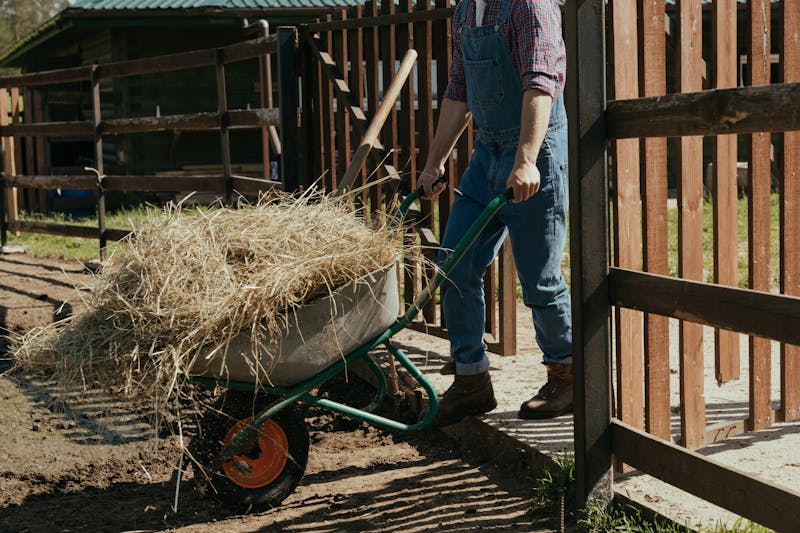Last Updated on October 6, 2025 by shawnshealth
Unlock real-world power with this farmer strength blueprint. Train with grit, function, and timeless toughness to build rugged, lasting strength.
Unlock Farmer Strength: The Rugged Blueprint for Real-World Power
Farmer Strength is raw, functional power built through hard, repetitive labor—not reps in a gym. It’s the kind of strength you see in ranchers, mechanics, linemen, and tradespeople who lift, haul, and endure without ever “training” in the traditional sense. Their bodies are shaped by necessity, not aesthetics.
This article explores how you can build that same rugged capability—whether you’re working a farm or training in your garage. We’ll break down the principles behind farmer strength, how it overlaps with strongman training, and how to replicate it using bodyweight, odd objects, and minimal gear.
You don’t need a barn or a barbell to train like a laborer. You need grit, consistency, and the right blueprint. Let’s get to work.
Note: At points in this article, you may see that I have used “functional strength” interchangeably or together with “farmer strength.” This is no accident. Both can be considered the same although some will argue that all strength is functional strength, and that is a good point as well.
💥 If you’re looking for a bodyweight-based approach to functional strength, check out my guide: The Ultimate Guide to Calisthenics: Timeless Strength, Mobility & Endurance.
🧘♂️💪 Learn how to build real-world power using minimalist workouts that require no machines—perfect for van life, winter training, or anyone chasing rugged, sustainable fitness.
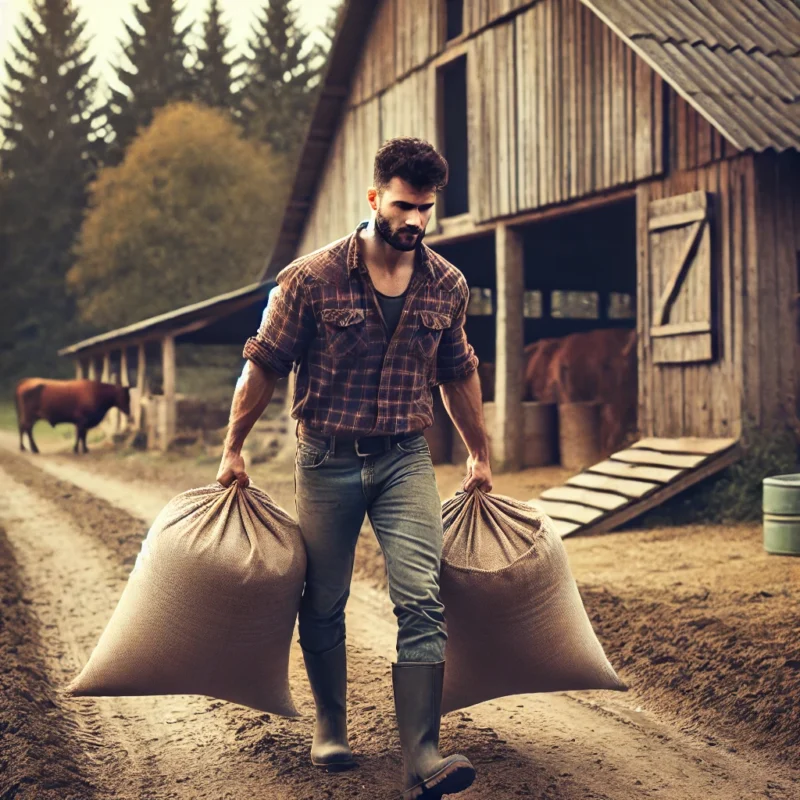
What Is Farmer Strength Training?
- Functional strength built through repetitive, physically demanding tasks.
- Focuses on grip strength, endurance, and core stability.
- Includes bodyweight exercises and manual labor simulations.
- Uses minimal or no equipment to replicate real-world tasks.
How Do You Build Farmer Strength Without Gym Style Weights?
- Bodyweight exercises: squats, lunges, push-ups, pull-ups.
- Loaded carries: use buckets, sandbags, or water jugs.
- Grip training: towel hangs, carrying heavy objects.
What Are the Key Benefits of Farmer Strength Training?
- Functional strength for everyday tasks.
- Grip strength for manual labor and sports.
- Endurance for sustained physical effort.
- Joint health through natural, functional movements.
- Mental toughness from consistent physical work.
Farmer Strength vs. Strongman Training: What’s the Difference?
- Similarities: Focus on functional strength, grip, and endurance.
- Farmer strength: Broader, includes everyday tasks.
- Strongman training: Event-specific with competitive elements.
- Overlap: Both involve lifting, carrying, and real-world strength.
🪨 Train like a powerhouse with this Strongman Training Overview from Breaking Muscle. Learn how to build full-body strength, grip endurance, and mental toughness using odd objects, loaded carries, and event-style lifts. Whether you’re prepping for competition or just want real-world power, this guide breaks down the essentials of strongman training for any gym setup
Watch this video short from the Bioneer on Farmer/Functional Strength
Table of Contents
Where it All Started: My Journey into Farmer Strength
I grew up on a farm, long before I ever heard the term “Farmer Strength.” It wasn’t until I saw UFC commentator Joe Rogan describe fighter Matt Hughes that the phrase clicked—because I’d lived it. We didn’t train; we worked. Hauling, lifting, digging, and enduring long hours built a kind of strength that didn’t come from machines or reps—it came from necessity.
That kind of power isn’t exclusive to farmers. I’ve seen it in a local preacher who ran a butcher shop—his grip could crush your hand without effort. I’ve seen it in a plumber who’s never touched a barbell but can exert force like a seasoned lifter. Farmer Strength is a general term, but it reflects something real: the raw, functional strength developed through hard, physical work.
In this article, I’m not just defining a trend—I’m unpacking a timeless truth. Farmer Strength and strongman training share deep overlap, and while the term may evolve, the principles remain. This is about building strength that lasts, using the same mechanisms that generations of tradespeople have relied on for decades.
Blessings!
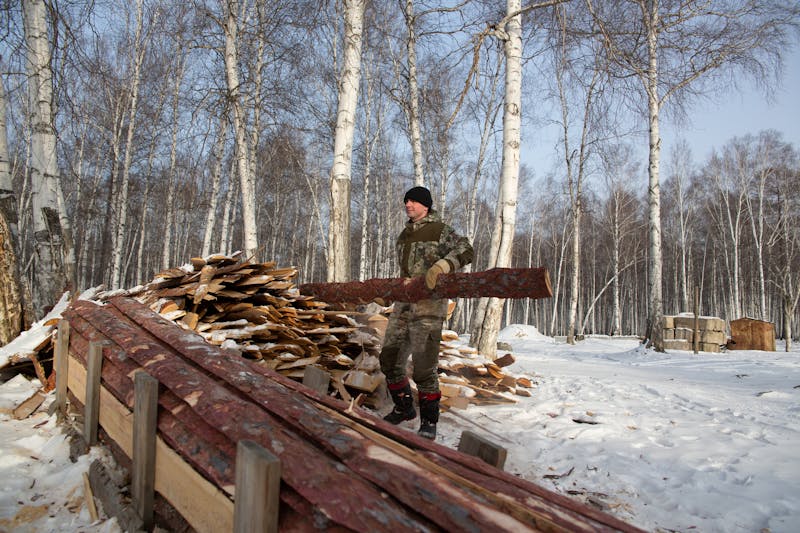
Key Principles of Farmer/Functional Strength Training That Align with Strongman Training
Both farmer strength training and strongman training focus on developing raw, functional strength through practical, real-world movements. Here are the core principles that overlap between the two:
- Full-body Engagement
Both training styles emphasize compound, full-body movements that engage multiple muscle groups simultaneously. Strongman events like the Atlas Stones or log presses and farmer strength exercises like deadlifts or overhead carries require the use of nearly every muscle in the body. - Grip Strength
Grip is crucial in both farmer strength and strongman training. Exercises like farmer’s carries or towel hangs for farmer strength mirror the need for a powerful, durable grip, which is critical in strongman events such as the farmer’s walk or stone lifting. - Functional Strength
Farmer strength is all about building practical strength that can be applied to everyday tasks. Similarly, strongman training emphasizes strength that can be used in various activities — lifting awkward objects, carrying heavy loads, or performing tasks under fatigue. - Stamina and Endurance
While both farmer strength and strongman training build raw power, they also emphasize stamina and endurance. For example, farmer carries require not just the strength to hold weight but the endurance to carry it over a distance, similar to strongman events that demand strength sustained over time. - Training with Odd Objects
Both training methods encourage lifting oddly shaped or uneven objects that mimic real-world challenges. For farmer strength, this could mean lifting buckets, sandbags, or logs. For strongman, events often involve lifting stones, logs, or kegs, which are irregular in shape and weight distribution. - Mental Toughness
Both training systems require a strong mental focus and determination. Whether it’s pushing through a grueling farm carry or finishing a heavy log press in a competition, mental resilience is key in both disciplines.
💪Discover the science behind muscle growth and performance in this Muscle & Fitness article: Volume vs. High Intensity
. Learn how training style impacts functional strength, endurance, and real-world power—essential insights for athletes, laborers, and fitness enthusiasts alike.
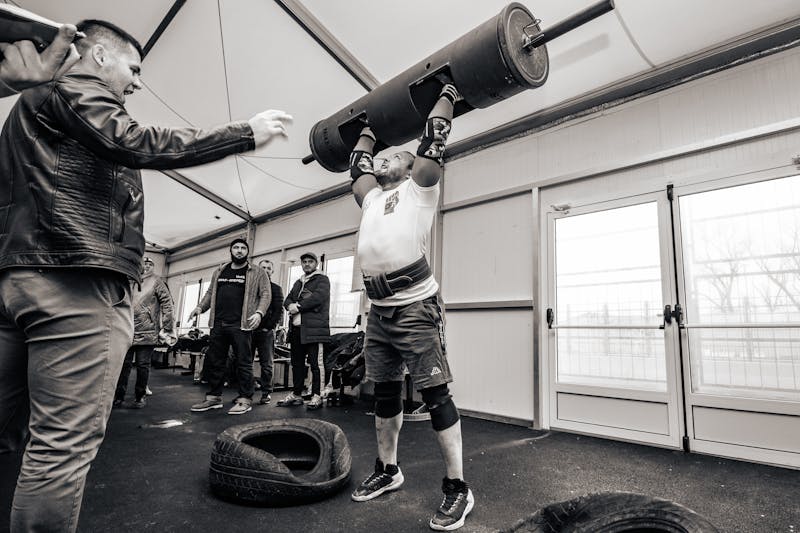
Why Farmer/Functional Strength Matters Today
In today’s world, many people lead sedentary lives — working at desks or spending long hours on their computers. This lifestyle can lead to a range of issues, including poor posture, muscular imbalances, and general weakness. Functional strength, on the other hand, is a reminder of the value of physical resilience, stamina, and practicality. It connects us to our physicality, grounding us in the timeless benefits of movement and functional strength.
The Key Benefits of Building Farmer/Functional Strength
- Real-World Strength: Unlike gym strength, which may not always translate to everyday actions, farmer strength helps you perform daily physical tasks more efficiently. Whether you’re lifting groceries, carrying furniture, or moving heavy objects, you’re prepared for whatever life throws your way.
- Durability and Joint Health: While bodybuilding can strain joints due to repetitive movements, farmer strength training encourages natural, multi-joint movements that can improve joint health and longevity. This type of training supports muscle endurance, helping to reduce wear and tear.
- Mental Toughness: Building farmer strength is about mental resilience. Pushing through tough conditions and sticking to physically demanding tasks requires a level of mental fortitude that is invaluable both in and out of the gym.
- Minimal Equipment, Maximum Benefit: One of the most significant aspects of farmer strength is that it can be built with minimal equipment. It’s all about creativity with tools you already have, whether it’s using sandbags, buckets, or your own body weight.
💪 Level up your real-world strength with this Fitness Volt article on Functional Strength Training. Discover how tactical movements, grip work, and endurance-based training can radically improve your performance—whether you’re lifting in the gym or hauling gear in the field. Perfect for anyone building rugged, functional power that lasts
How to Train for Farmer Strength Without Weights
Even without access to a gym or equipment, you can still develop farmer/functional strength by focusing on practical, functional exercises that mimic the movements of physical labor.
1. Bodyweight Movements That Mimic Manual Labor
Bodyweight exercises are fundamental to developing strength that can be applied in everyday tasks. These movements are simple but effective for building endurance, mobility, and muscle.
- Push-ups: Increase chest and arm strength. Variations like decline push-ups add difficulty.
- Pull-ups/Chin-ups: Strengthen the back and arms for lifting and hauling movements.
- Squats: Improve leg strength and stability, which are crucial for lifting and carrying heavy loads.
- Lunges/Step-ups: Perfect for replicating real-world movements like stepping over obstacles or carrying heavy objects.
- Planks and Crawling Movements: Engage the core and promote stability for tasks that require balance and coordination.
One might say, “how are push-ups like anything that I could possibly have to do, ever? Will fireman Jonny say, “Hey that guy needs saved from that burning house! Quick! Drop and give me 20!”
That’s a good question. These bodyweight movements truly do wonders for strengthening the whole body. While I never had to drop on the ground to do push-ups while building fence or chopping wood, the overall head-to-toe strength of push-ups is very beneficial in generally strengthening the body as a whole coordinated unit. The same with other bodyweight exercises.
Considering we have a very high population of people who never get off the couch (unless they have too), being able to perform these whole-body highly coordinated movements can be invaluable in gaining overall functional strength.
While you may never be asked by the little old lady across the road to jump up in a tree and do 15 pullups to get all fifteen of her cats out of a tree, pullups can make your upper body (back, arms, chest, core) a dynamic coordinated unit that is very useful in overall functional “Farmer Strength.” So, yes, you can develop amazing functional strength just using your own bodyweight!
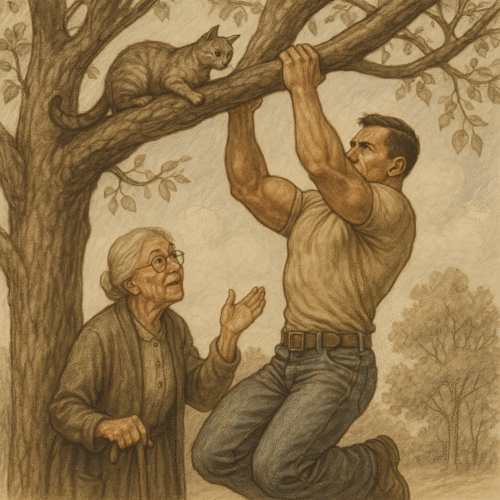
2. Loaded Carries with Found Objects
You don’t need expensive gym equipment to train for farmer strength. Common household objects or items found outdoors can serve as ideal substitutes.
- Carry heavy buckets or bags of sand for distance. Try carrying them overhead or at shoulder height.
- Use a backpack filled with heavy objects like books, rocks, or bricks for weighted walks.
- Farmer carries using water jugs or toolboxes: These create an uneven weight distribution, forcing your grip and core to engage more.
3. Grip and Core Emphasis
Grip strength is essential in farmer strength because it helps you hold onto heavy objects for extended periods.
- Towel hangs or rope climbs are great ways to improve grip endurance.
- Sledgehammer swings on a tire or log mimic the rotational movements common in laborious tasks.
- Holding plank variations for extended times will build core stability, which is key for lifting and carrying heavy loads.

How to Build Farmer Strength Using Weights
If you have access to a gym, here are some ways to train for farmer strength with weights:
1. Prioritize Compound Lifts
Compound lifts are multi-joint movements that engage multiple muscle groups and mimic real-world physical tasks.
- Deadlifts: A key movement that builds posterior chain strength (lower back, glutes, hamstrings), which is essential for lifting heavy objects.
- Overhead Press and Push Press: Develop shoulder and arm strength, which is essential for lifting objects overhead.
- Front and Back Squats: Strengthen the legs, essential for squatting down and lifting.
- Bent-over Rows and Pendlay Rows: Engage the upper back, improving your ability to pull and carry.
2. Emphasize Carry Variations
Incorporating carries into your routine is crucial for developing real-world strength. Here are a few options:
- Farmer’s Carries with heavy dumbbells or kettlebells: Pick up heavy weights and carry them for time or distance.
- Yoke Walks or Sandbag Carries: These movements improve stability and endurance while engaging multiple muscle groups.
- Zercher Carries: A great alternative to front squats that engages the core and upper body while carrying a load.
3. Use Functional Training Tools
Functional training tools help develop farmer strength in ways that free weights can’t always replicate.
- Sled pushes or pulls: A great way to build power and leg strength.
- Weighted vest workouts: Add extra resistance to bodyweight exercises like push-ups, squats, or walking lunges.
- Hammer strength machines (for supplemental exercises like rows or presses).
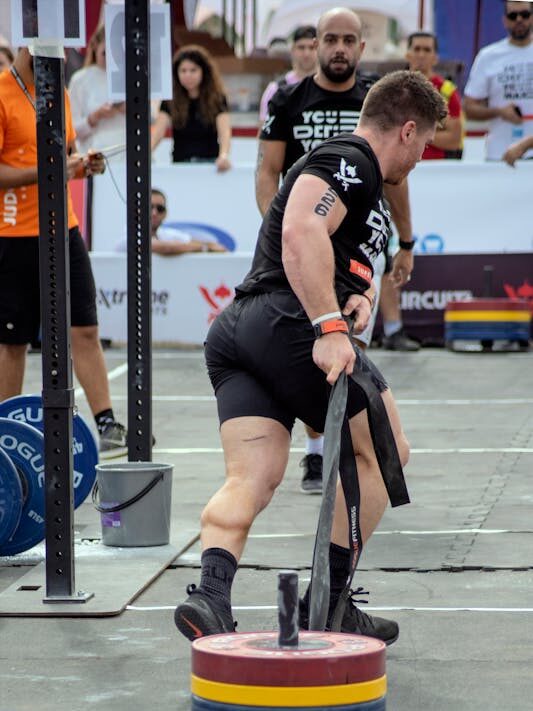
Combining Gym and Manual Labor for Maximum Gains
The ultimate way to build farmer/functional strength is by combining both gym-based training and manual labor-style movements. This hybrid approach mirrors the varied physical demands of real-world labor, resulting in a robust and durable body.
Weekly Template Example:
- Day 1: Gym strength (heavy deadlifts, farmer carries, planks)
- Day 2: Bodyweight conditioning (push-ups, pull-ups, crawling)
- Day 3: Manual object training (bucket carries, tire flips, hammer swings)
- Day 4: Active recovery (walking, mobility work)
- Day 5: Mix (sandbag squats + weighted step-ups + grip work)
By rotating between these different types of training, you prevent overuse injuries and improve your functional capacity. This approach will help you become more adaptable, just like a real-world laborer.
Traits That Define True Farmer Strength
Building farmer strength is about more than just physical training. It’s about cultivating a mindset that emphasizes practicality, simplicity, and consistency.
Key Traits of Farmer Strength:
- Consistency: It’s about showing up every day, whether you’re lifting in the gym or hauling hay bales.
- Simplicity: Focus on straightforward, functional exercises — no need for complicated equipment or training regimens.
- Functionality: Every movement has a clear, practical purpose.
- Grit: Real-world strength requires perseverance and resilience, which is as important as physical power.
Final Thoughts: Build Strength That Lasts
Building functional strength is not about chasing aesthetic gains or lifting the heaviest weights — it’s about developing a rugged, durable body that can withstand the demands of everyday life. Whether you’re lifting in the gym, hauling heavy loads, or simply going about your daily tasks, the strength you develop will serve you well.
🔗 Explore More Farmer + Functional Strength Guides
Ready to take your strength further? Whether you’re training in a garage, prepping for winter van life, or just chasing real-world power, these guides will help you build grit, mobility, and lasting capability:
- 🧱 Farmer Strength Training: 6 Powerful Moves for Total Body Strength Build rugged strength with compound lifts and manual labor-inspired movements.
- 💪 Farmer Strength: 7 Powerful Ways to Build Real-World Muscle Discover unconventional methods to develop dense, durable muscle—no machines required.
- 👴 Functional Strength for Seniors: 10 Essential Exercises for Daily Life Safe, effective movements to stay strong, mobile, and independent at any age.
- 🚶♂️ Unlock Functional Strength: 7 Powerful Beginner Exercises for Real-World Strength Start your journey with minimalist, progression-aware routines that work anywhere.
- 🔍 Strength Training vs. Functional Training: What’s the Difference? Understand how each approach serves your goals—and when to blend them.
- 🛠️ 7 Powerful Functional Fitness Moves for Tough Times Train with purpose using bodyweight and odd-object lifts that mimic real-world tasks.
- 🧘♂️ Functional Strength Through Calisthenics: Unlocking Your Full Potential Master bodyweight training for timeless strength, mobility, and endurance.
Equipment to Enhance Farmer Strength (Optional but Useful)
While you can certainly build farmer strength with bodyweight exercises, using the right equipment can help enhance your training and provide greater variety.
- Sandbags (adjustable weight, unstable load)
- Kettlebells (great for carries and dynamic lifts)
- Weight Vest (adds resistance to any movement)
- Sledgehammer & Tire (old-school conditioning)
- Rogue-style farmer-carry handles
🔥 Gear to Help You Achieve Your Health and Fitness Goals 💪
If you’re looking for tools to enhance your fitness journey, check out this. Explore top-rated fitness gear on Amazon to enhance your workouts. Check out the latest picks here! 🛒 to support your workouts and progress.
🚀 Find equipment designed to boost strength, endurance, and overall performance!
⚠️ Short disclaimer: As an Amazon Associate, I earn from qualifying purchases.
🤔 People Also Ask About Farmer/Functional Strength
What is farmer strength?
- Farmer strength refers to natural, real-world functional strength.
- It develops through physical labor like lifting, pulling, and carrying heavy loads.
How is farmer strength different from gym strength?
- Gym strength often isolates muscles, while farmer strength builds full-body power.
- Farmer strength emphasizes grip, core, and endurance through practical tasks.
Can you train for farmer strength without a farm?
- Yes, farmer strength can be trained using functional exercises like farmer’s carries, sandbag lifts, and sled pulls.
- Bodyweight and odd-object training are also effective.
Why is grip strength important in farmer strength?
- Grip strength is a foundation of farmer strength, essential for holding and moving heavy tools and loads.
- It directly impacts performance in lifts and everyday functional tasks.
What are the best exercises for building farmer strength?
- Farmer’s carries
- Deadlifts
- Tire flips
- Sled drags
- Sandbag carries
Is farmer strength useful in everyday life?
- Yes, farmer strength builds real-world ability to lift, carry, and move things safely.
- It enhances functionality and reduces risk of injury in manual tasks.
Do farmers naturally build muscle?
- Yes, farmers develop lean, dense muscle from repetitive, heavy physical labor.
- The result is practical, sustainable strength—not just appearance-based muscle.
How can I measure farmer strength?
- Carrying heavy loads over distance
- Grip endurance and strength tests
- Performance in compound movements like deadlifts and carries
How is farmer strength similar to strongman strength?
- Both involve lifting, carrying, and dragging awkward heavy objects.
- Strongman and farmer strength emphasize real-world power, core stability, and grip.
How does farmer strength apply to athletic performance?
- Farmer strength improves explosive power, grip control, and balance.
- It’s valuable for athletes in contact sports, obstacle courses, and strength competitions.
Farmers who wait for perfect weather never plant. If they watch every cloud, they never harvest. – Ecclesiastes 11:4

